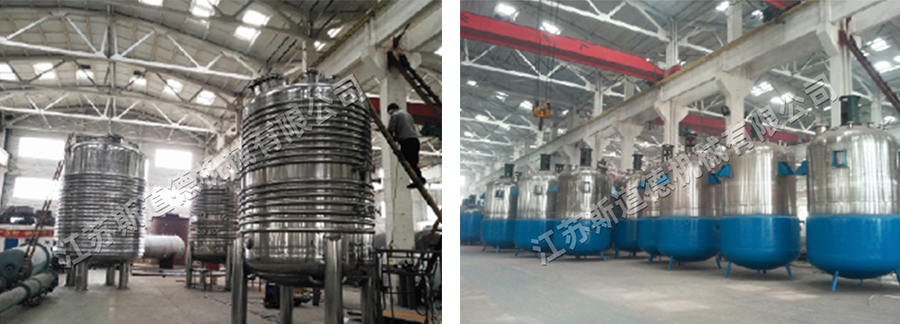Hot sale of high quality reactor Pressure Vessel
Product introduction:
Reactor technology has come a long way since its inception, and today, reactors are widely used in various industries for different purposes. One such application is the use of reactors in chemical engineering, where they are used for a process called chemical synthesis.
The advantages of using a reactor for chemical synthesis are numerous. Firstly, reactors allow for precise control over reaction conditions, such as temperature, pressure, and concentration. This is crucial for optimizing reaction rates and yields, which ultimately leads to more efficient production processes and cost savings.
Secondly, reactors allow for continuous processing, which means that once the reactor is set up, it can run for long periods without interruption. This is particularly useful for large-scale production processes where downtime can be costly.
Another advantage of using reactors is that they enable the use of hazardous or toxic materials that would otherwise be too dangerous to handle. By confining the reaction to a controlled environment, the risk of accidents or exposure to harmful substances is greatly reduced.
Reactor technology also allows for the production of high-purity products, which is vital in industries such as pharmaceuticals and electronics. By controlling the reaction conditions, impurities can be minimized or eliminated, resulting in a more consistent and reliable end product.
Finally, reactors are highly versatile and can be used for a wide range of chemical reactions, making them an essential tool in chemical engineering research and development.
In conclusion, the advantages of using a reactor for chemical synthesis are clear. They provide precise control over reaction conditions, allow for continuous processing, enable the use of hazardous materials, produce high-purity products, and are highly versatile. As such, reactors are an invaluable tool in the chemical engineering industry and will continue to play a crucial role in the development of new materials and products.
Main technical parameters:
| Specifications | Nominal Diameter(mm) | Jacket Nominal Diameter(mm) | Motor Power(kw) | Reducer Model | Stirring Speed(rpm) |
| 30 | 400 | 500 | 0.6 | BLD 0.6-1 | 60-100 |
| 50 | 500 | 600 | 0.8 | BLD 0.8-1 | 60-100 |
| 100 | 550 | 650 | 1.1 | BLD 1.1-1 | 60-100 |
| 150 | 600 | 700 | 2.2 | BLD 2.2-2 | 60-100 |
| 200 | 650 | 750 | 2.2 | BLD 2.2-2 | 60-100 |
| 300 | 800 | 900 | 3 | BLD 3-2 | 60-100 |
| 500 | 900 | 1000 | 3 | BLD 3-2 | 60-100 |
| 800 | 1100 | 1200 | 4 | BLD 4-2 | 60-100 |
| 1000 | 1200 | 1300 | 4 | BLD 4-3 | 60-100 |
| 1500 | 1300 | 1400 | 4 | BLD 4-3 | 60-100 |
| 2000 | 1400 | 1500 | 5.5 | BLD 5.5-3 | 60-100 |
| 2500 | 1400 | 1500 | 7.5 | BLD 7.5-4 | 60-100 |
| 3000 | 1400 | 1500 | 7.5 | BLD 7.5-4 | 60-100 |
| 3500 | 1400 | 1500 | 7.5 | BLD 7.5-4 | 60-100 |
| 4000 | 1500 | 1600 | 7.5 | BLD 7.5-4 | 60-100 |
| 5000 | 1600 | 1700 | 7.5 | BLD 7.5-4 | 60-100 |
| 6000 | 1800 | 1900 | 15 | BLD 15-5 | 60-100 |
| 18000 | 2000 | 2100 | 15 | BLD 15-5 | 60-100 |
| 32000 | 3000 | 3200 | 37 | BLD 37-65A | 35-59 |
| 80000 | 4000 | 4200 | 55 | BLD 55-56A | 35-59
|
Products show:
